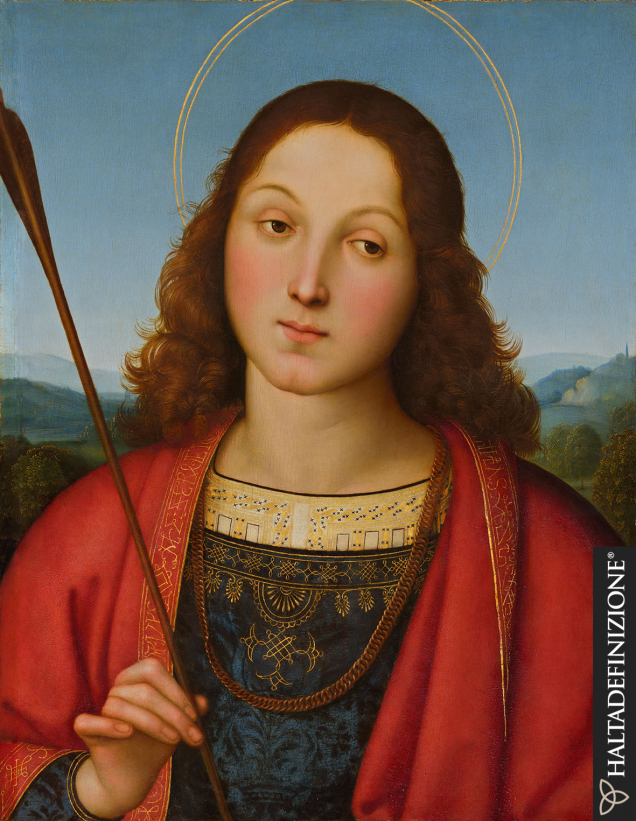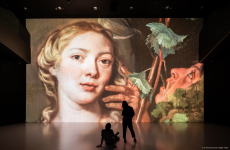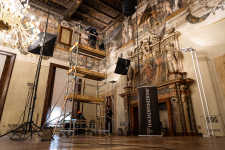The Saint Sebastian by the young Raphael, held in the Accademia Carrara of Bergamo, can now be seen in ultra-high definition Gigapixel format. Since its digital acquisition, it is available for viewing, with the ability to zoom in and enlarge even the smallest details, using the multimedia viewer that is capable of revealing details that are not visible to the naked eye.
Digital imaging technology is a demonstration of the fruitful collaboration between art and technology, which used to be mostly devoted to conservation and restoration of art. But new digital technology has also proven to be of great value to enhancing the uses and promotion of our cultural heritage. The ability to display these works across long distances has become almost as essential as the ability to view the original works in their physical location.
Ultra-high definition Gigapixel digital acquisition has two purposes. First, it makes it possible to monitor the conservation status of works of art, by comparing precise digital copies made across an interval of time. Second, it gives the public a new kind of access to these masterworks in ultra-high definition, to support teaching about the art and to allow long-distance virtual viewing.
Raphael’s Saint Sebastian is one of the most important masterworks in the Accademia Carrara. The artist chose different iconography than is usual for Saint Sebastian, who is traditionally depicted nude and pierced with the arrows that are the symbol of his martyrdom of the flesh. Here, we see only a half-bust, wearing elaborately decorated clothing and a facial expression that is sweet and gentle. There was no trace of this work for three centuries, up until the early 1800s, when we begin to see this Saint Sebastian appear in various private collections in Lombardy. The Accademia Carrara of Bergamo acquired it in 1866, along with two-hundred forty other works in the collection of Count Giuseppe Lochis. Apart from the great praise from art critics of the time, the high value of the portrait of San Sebastian is also reflected in its price, 4,000 Florins, which was very high even for then.
There is no doubt that this is Raphael’s work, but there are questions about its chronology. It certainly belongs to the artist’s youth. The influences of Perugino are evident, as are clear references to the style of Pinturicchio in the depiction of precious ornaments in the clothing, painted with great skill and detail.
Today’s critics agree that it dates from 1503, just after the Baronci Altarpiece (1500-1501), which was the 17-year-old Raphael’s first commission, and the Marriage of the Virgin of 1504, the masterpiece that definitively marks his maturity as a painter. This work is also available in Haltadefinizione’s virtual online gallery.
The dreamlike atmosphere that surrounds the subject comes from the very finely detailed execution and the almost miraculous display of light and shade. It was painted for the private devotion of a client with very refined taste. This explains the saint’s aristrocratic image, seen holding an arrow that represents his martyrdom.
“We are very pleased to make one of the world’s most important works from the Accademia Carrara available in Haltadefinizione’s online gallery,” says Luca Ponzio, founder of Haltadefinizione. “At the present time, when we are living through prolonged closures due to the Coronavirus pandemic, digital ultra-high definition actually provides the only point of access that allows people to view and appreciate works of art in all their detail and splendor. This provides a substitute when it is impossible for visitors to enjoy personally visiting the original works. Today, these ultra-high definition digital galleries are an extraordinarily useful resourse for our museums, with their boundless possibilities for sharing and promoting our artistic heritage.”
In the words of Gianpietro Bonaldi, Operations Director of the Accademia Carrara of Bergamo, “A museum must be curious to explore different opportunities to make its contents available to a wide audience and new technology gives us this chance. It is a vehicle that can take us on new voyages to the smallest and finest hidden details in a masterpiece like the San Sebastian, which reveal the magic and genius of Raphael.”



